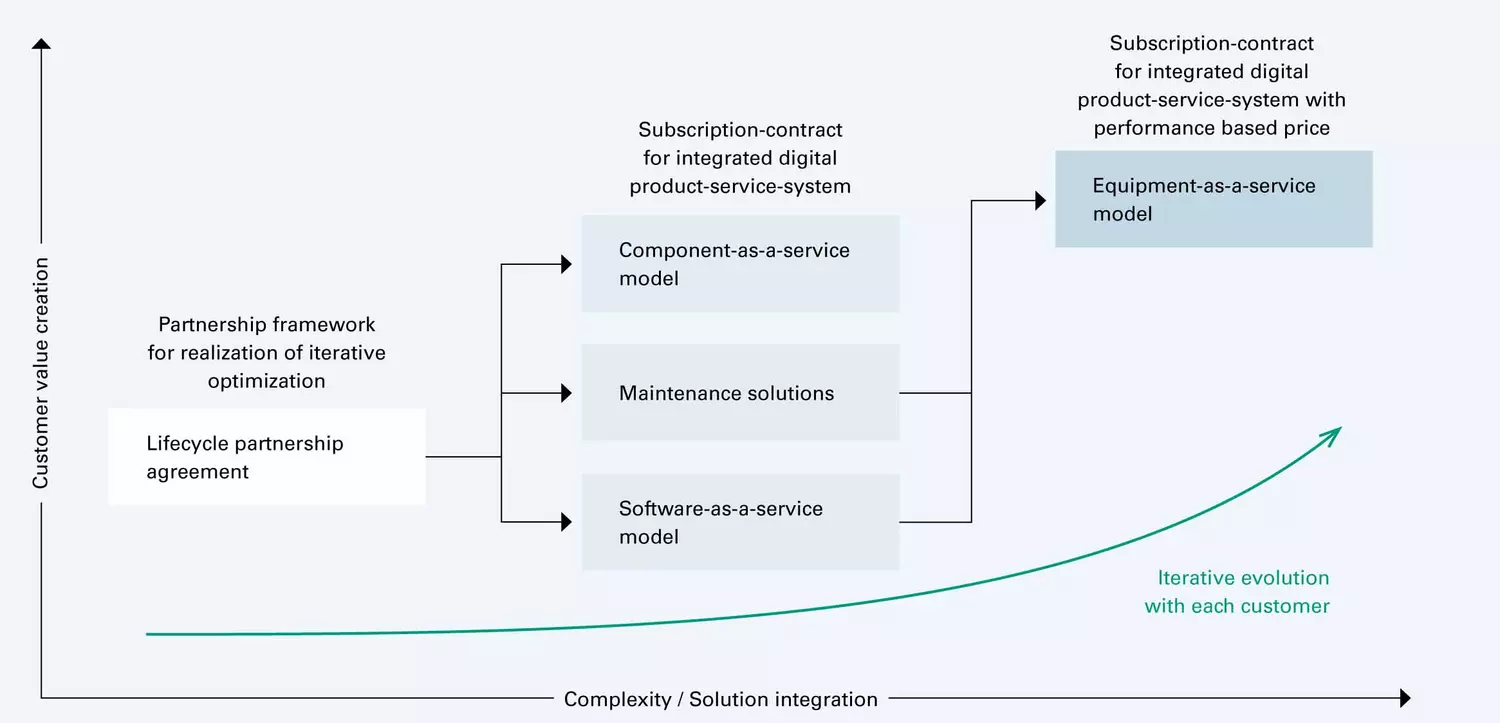As part of its lifecycle partnership concept, SMS group aims to realize unique value for customers by integrating assets, digital solutions, and additional services into a seamless subscription model, provided within comprehensive solution packages. The subscription business model complements the traditional service model, which focuses mainly on spare parts, repairs, and upgrades. In terms of customer value, the change is not only about improving availability and productivity, but also about cooperating with the customer to enhance product quality and sustainability. It aims to actively improve system performance directly on site at the customer’s premises. Tobias Leiting, expert for integrated solution business models at SMS: “In the long term, this leads to a win-win situation for both sides, as the improved performance results in more sales for the customer, in which SMS group can participate as a partner.”
The focus of the lifecycle partnership approach is on understanding customers’ problems and requirements and on continuously tailoring solutions closely to customer needs, thereby strengthening the partnership in areas where SMS can be of particular value. The start of a partnership can begin with a lifecycle partnership agreement between SMS and its customer. As part of this long-term, lifecycle partnership agreement, SMS experts support customers with their tasks, providing assistance with issues, optimizing maintenance and repair plans for equipment, or tailoring proposals for appropriate plant upgrades, for example. This partnership can be intensified by offering a comprehensive range of solutions on an ongoing basis.

Advanced service models
One solution on offer is the software-as-a-service model. Here, the customer receives access to software and the customized services associated with this software. For instance, this could include an energy assessment software and additional analysis services for identifying energy losses and making recommendations for improvements.
A second model is the maintenance solution. With this model, SMS provides a set of services, such as an emergency hotline and services, regular inspections, and asset health analytics. In this way, SMS assumes responsibility for improving availability and provides an extension of the warranty for plant components. An example of this kind of maintenance solution is our Condrive service, an electric oscillation drive for long-product casters. Here, the offering covers spare parts, warehousing, and workshop overhauls as well as inspections, remote or field services, right up to condition monitoring and KPI tracking.
The third model is the component-as-a-service model. With this model, customers do not pay for the equipment, but rather for the use of the equipment. As a result, SMS takes care of all the activities involved in getting the equipment up and running and provides add-ons for it, including upgrades. This also means that SMS is prepared to take back an entire component without charging any additional costs if the component does not perform as expected. For example, the component-as-a-service model can be applied for centerline control systems for hot strip mills, covering everything from equipment financing, spare parts, warehousing, and warranty extension to inspections, calibrations, remote services, field services, performance meetings as well as software maintenance, software updates, and KPI tracking and visualization.
We want to create a win-win situation for both sides.
The equipment-as-a-service model is a further development of these models. It combines various offerings and solution models in one comprehensive package. The focus of the model is on continuously improving equipment performance. By providing various services under one roof, best-in-class performance levels are achieved. To harmonize the objectives between the customer and SMS over the lifecycle, SMS also offers performance-based pricing models, such as pay-per-use or pay-per-output models, for the equipment-as-a-service model.
Tobias Leiting: “The success of these subscription models is reflected not least in the feedback we have received from our customers in recent months. From our customers’ perspective, SMS’s expertise as an integrated lifecycle partner is a clear unique selling point and has already led to several projects being awarded in our favor.”
